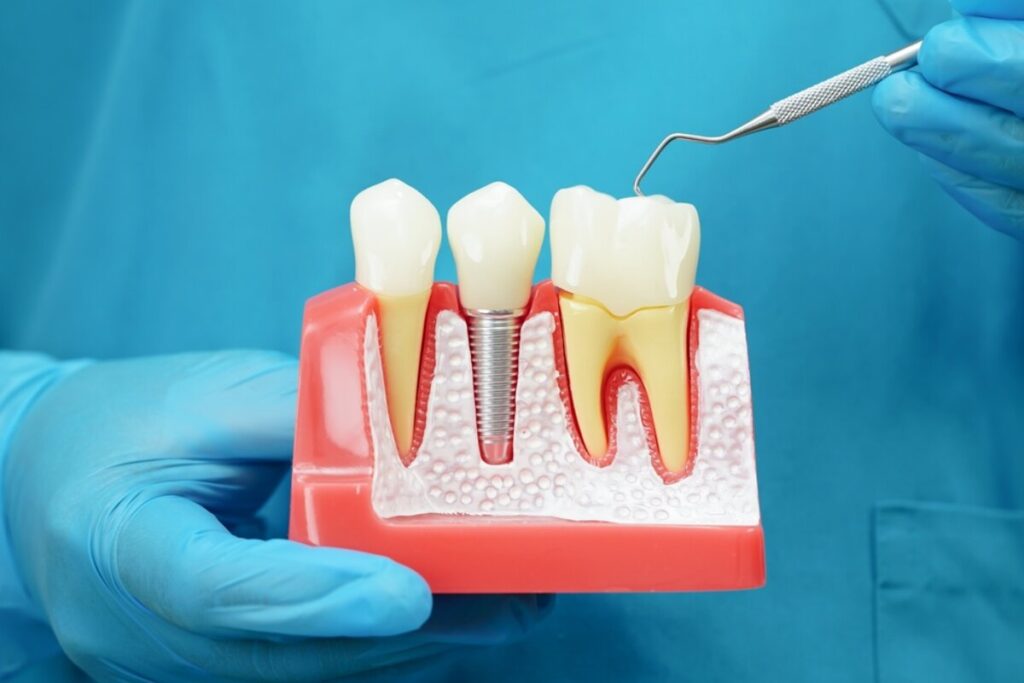Dental implants are often hailed as the gold standard for replacing missing teeth, offering both functionality and a natural appearance. But what happens if you’ve been told you have severe bone loss? Is it still possible to get dental implants? The answer isn’t a simple yes or no—it depends on your unique situation and the options available to address bone deficiencies.
In this article, we’ll explore what bone loss means for dental implants, the requirements for a successful procedure, and alternative solutions if implants aren’t suitable for you.
Understanding Dental Implants and Bone Requirements
Dental implants are titanium or zirconia posts surgically placed into the jawbone to act as artificial tooth roots. For the procedure to be successful, a minimum amount of healthy bone is required to secure the implant. Bone serves as the foundation, and without sufficient density or volume, the implant cannot integrate properly, potentially leading to failure.
At many dental offices, including ours, a minimum of 8 millimeters of bone is typically required to proceed with implants. During your evaluation, your dentist will take detailed X-rays or scans to measure bone quality and ensure you meet the baseline requirements.
Why Does Bone Loss Occur?
Bone loss in the jaw is a common issue, especially in individuals who have been missing teeth for an extended period. When teeth are lost, the surrounding bone begins to deteriorate due to lack of stimulation. Other causes of bone loss include:
- Gum disease: Advanced periodontal disease can erode bone tissue over time.
- Trauma or injury: Significant damage to the jawbone can lead to bone loss.
- Medical conditions: Conditions like osteoporosis or prolonged use of certain medications can weaken bone density.
If you’re experiencing severe bone loss, you might be wondering whether dental implants are entirely off the table. The good news is there are ways to address this issue.
Can You Get Dental Implants with Severe Bone Loss?
The short answer is: maybe. Severe bone loss doesn’t automatically disqualify you from getting dental implants, but it does complicate the process. For individuals with insufficient bone, additional procedures or alternative solutions may be necessary.
Bone Grafting and Sinus Lifts
One common way to prepare for dental implants in cases of bone loss is through bone grafting. This procedure involves adding bone material to the jaw to rebuild its structure. A sinus lift is a similar procedure that adds bone to the upper jaw near the sinus cavity. Bone grafting can be highly effective, but success depends on several factors, including:
- Extent of bone loss: Smaller grafts are more likely to integrate successfully.
- Body’s acceptance of grafted bone: Your body needs to recognize the graft as natural tissue, or the procedure may fail.
- Healing time: Full integration can take several months, delaying the implant process.
Referral to an Oral Surgeon
In complex cases of severe bone loss, your dentist may refer you to an oral surgeon. These specialists can assess whether advanced surgical options or cutting-edge techniques, such as zygomatic implants (which anchor to the cheekbone instead of the jawbone), are viable.
Alternatives to Dental Implants
If dental implants are not an option due to severe bone loss or other factors, there are alternative solutions to restore your smile and functionality:
Dentures
Dentures are a cost-effective option for individuals who have lost all or most of their teeth. They are removable and designed to fit over the gums, providing an aesthetic and functional solution.
Bridges
For those missing one or a few teeth, dental bridges can be a permanent alternative. These use adjacent teeth as anchors to support artificial teeth, bypassing the need for implants altogether.
Partials
Partials are another alternative for selectively replacing missing teeth. They are more stable than dentures and less invasive than implants, offering a middle ground for many patients.
Key Takeaways
- Bone is essential for implants: A minimum amount of bone, often around 8 millimeters, is required to place dental implants.
- Severe bone loss isn’t the end: Bone grafting and advanced techniques can make implants possible for some patients with significant bone loss.
- Alternatives exist: Dentures, bridges, and partials provide viable options if implants aren’t feasible.
Final Thoughts

Ultimately, your dentist or oral surgeon will work closely with you to determine the best solution based on your unique situation. If you’re considering dental implants and have concerns about bone loss, scheduling a consultation is the first step toward restoring your smile and confidence.
Contact Indian Trail Dental Studio today to discuss your options and find the best solution for your dental needs!



